 Spectacled Owl (Pulsatrix perspicillata)
Spectacled Owl (Pulsatrix perspicillata)
 Spectacled Owl (Pulsatrix perspicillata)
Spectacled Owl (Pulsatrix perspicillata) |
 |
| Foto's (klik er op om te vergroten) | ||
|---|---|---|
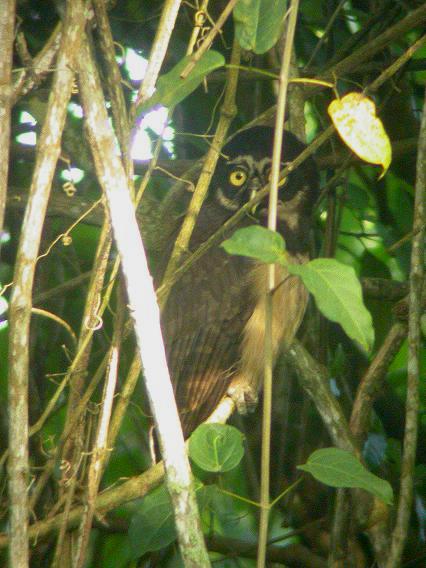 © Erik Toorman | 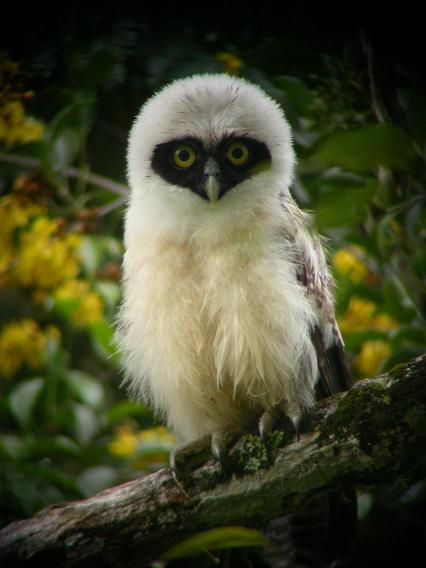 © Erik Toorman | 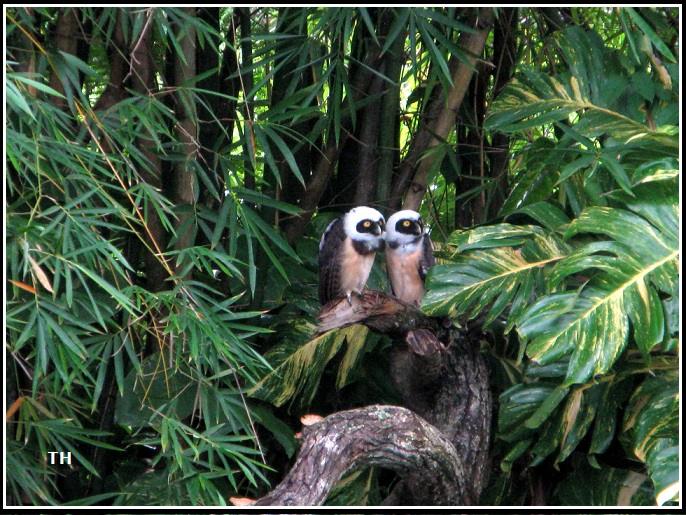 © Theo Hiemcke |
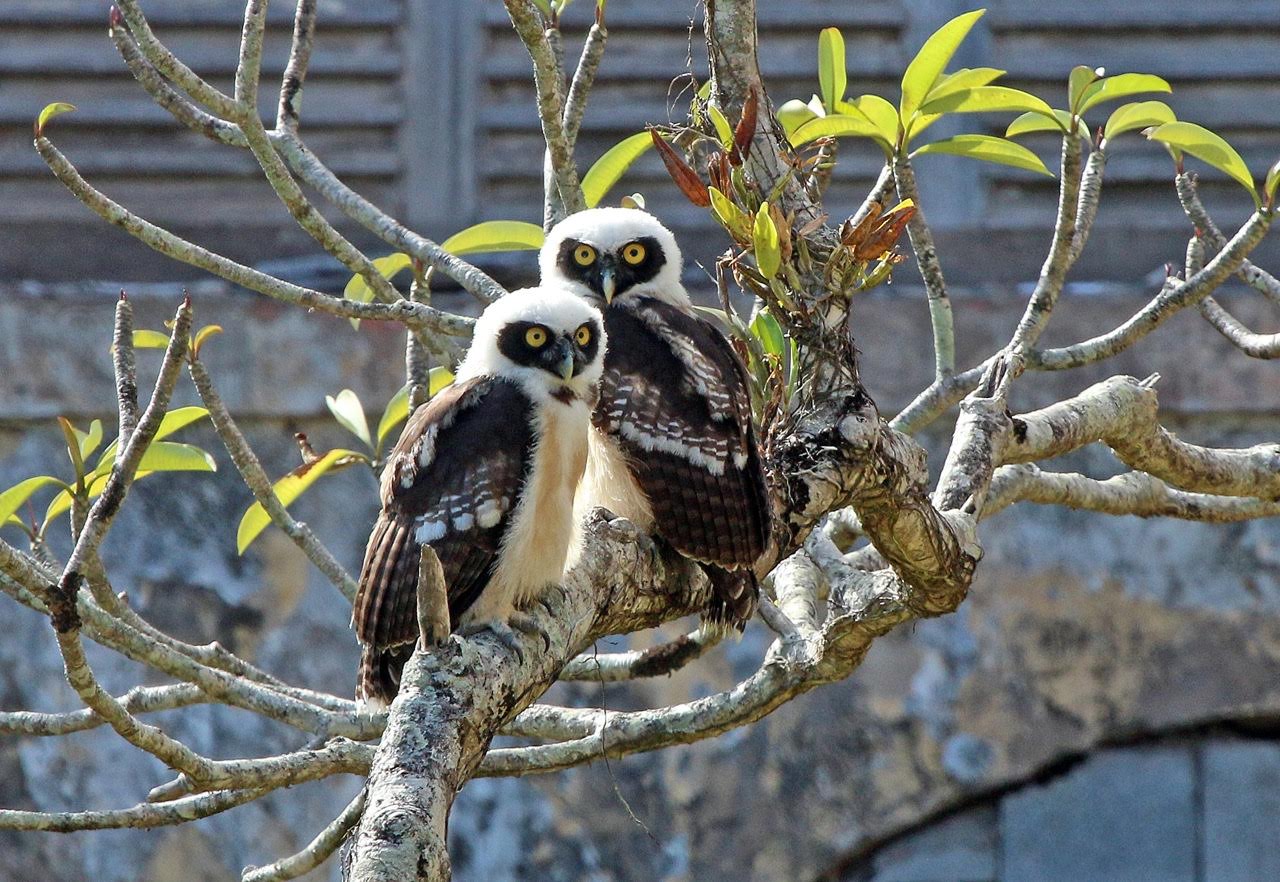 Frans Guyana © Michel Giraud-Audine | 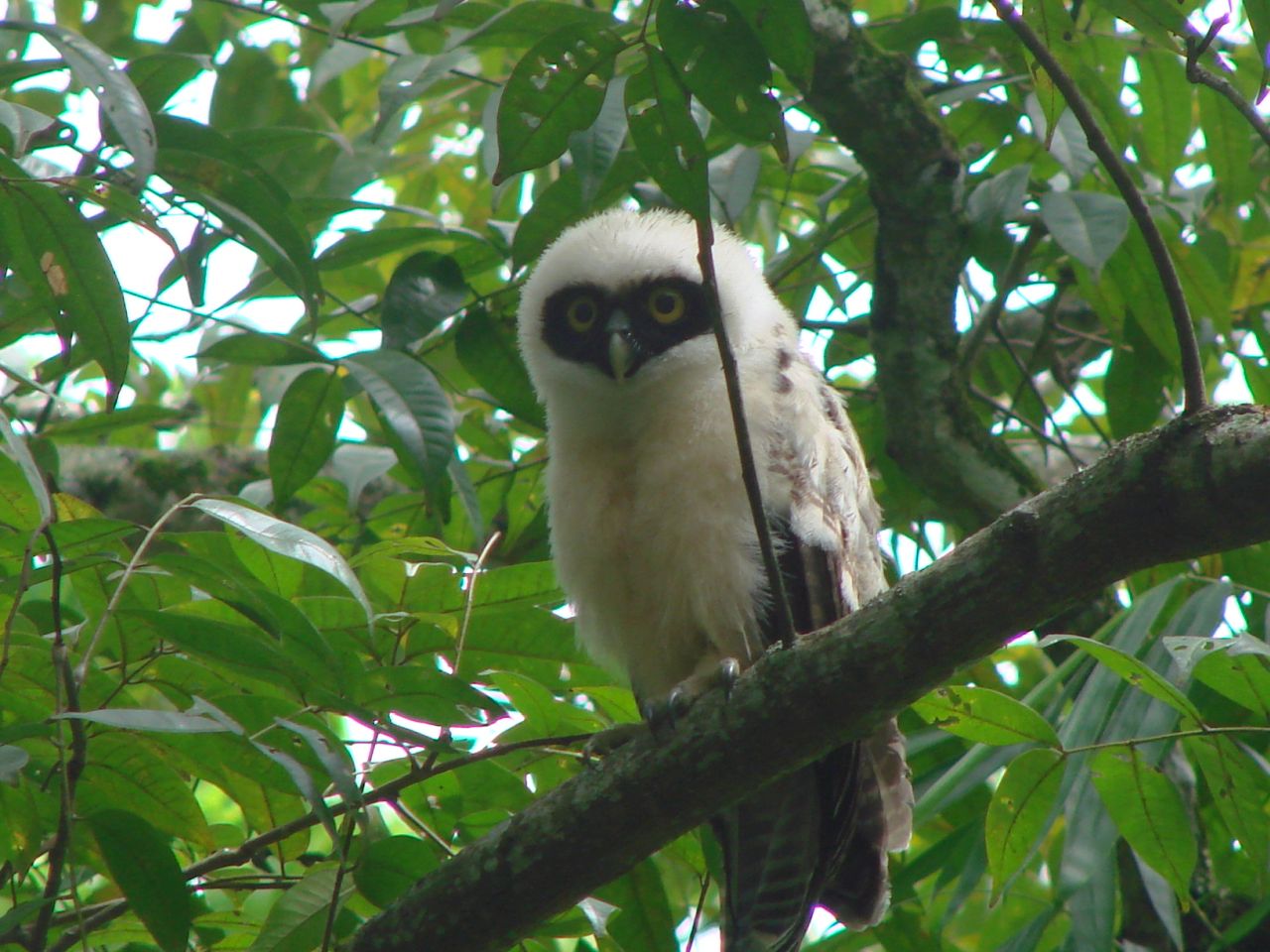 © Dominiek Plouvier |
| Deze mooie en grote Briluil is met één van zijn twee jongen gefotografeerd door Erik Toorman op de universiteitscampus aan de Leysweg in Paramaribo in juni 2007. Het is een vooral bruine vogel met kenmerkende witte randen rond zijn ogen (de bril) en zonder zichtbare oren. Het jong is vooral wit met grote klauwen. Theo Hiemcke zag twee vogels in zijn tuin in Paramaribo Noord in Juni 2013. Die zijn al wat ouder, maar hebben nog geen volwassen kleed. Dat kan volgens het Handbook of Birds of the World vijf jaar duren. De meeste andere jonge uilen lijken op hun ouders, zodra ze hun donskleed verloren hebben. De briluilen zijn vooral 's nachts actief overal waar er bomen zijn in Suriname (en dat is bijna overal), maar zelden op hogere plekken. Dominiek Plouvier maakte een video van een jonge briluil. |
| Video (klik op de link of op de 'play'-knop om te kijken) | ||
|---|---|---|
| Video opname van een Briluil © ; |
|
|
||||||||||||||||||||||||||||||||||||||||||||
| Verdeling van waarnemingen over het jaar | Waarnemingen van broeden over het jaar |
|---|---|
| The 158 reported observations of this bird in Suriname, mainly for the last 50 years up to 2018, have been grouped by month. More birds on one day are counted as one observation. Of course, if the graph should depict the total number of birds seen, the differences between the months could be much more pronounced. | The 3 reported breeding observations of this bird in Suriname. Most observations are about nest with eggs, some about fledglings, or feeding at a nest or the building of a nest. Of the about 5000 nests and eggs found for all species together, about 1/3 comes from the egg collection of Penard between 1896 and 1905. For some reason most collecting then was done in the first half of each year, so the shown distribution does not necessarily reflect the actual breeding preferences. The main dry season in Suriname is reckoned to be from half August to the end of November, the main wet season from half April to half August, but the the timing of begin and end does vary from year to year. Around March a second dry season often occurs. |